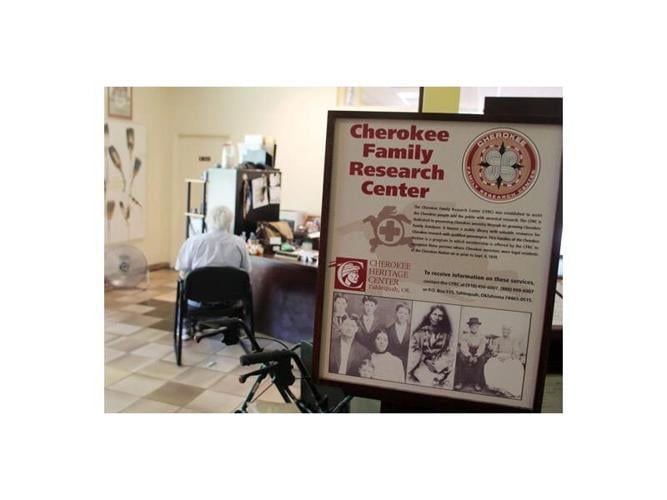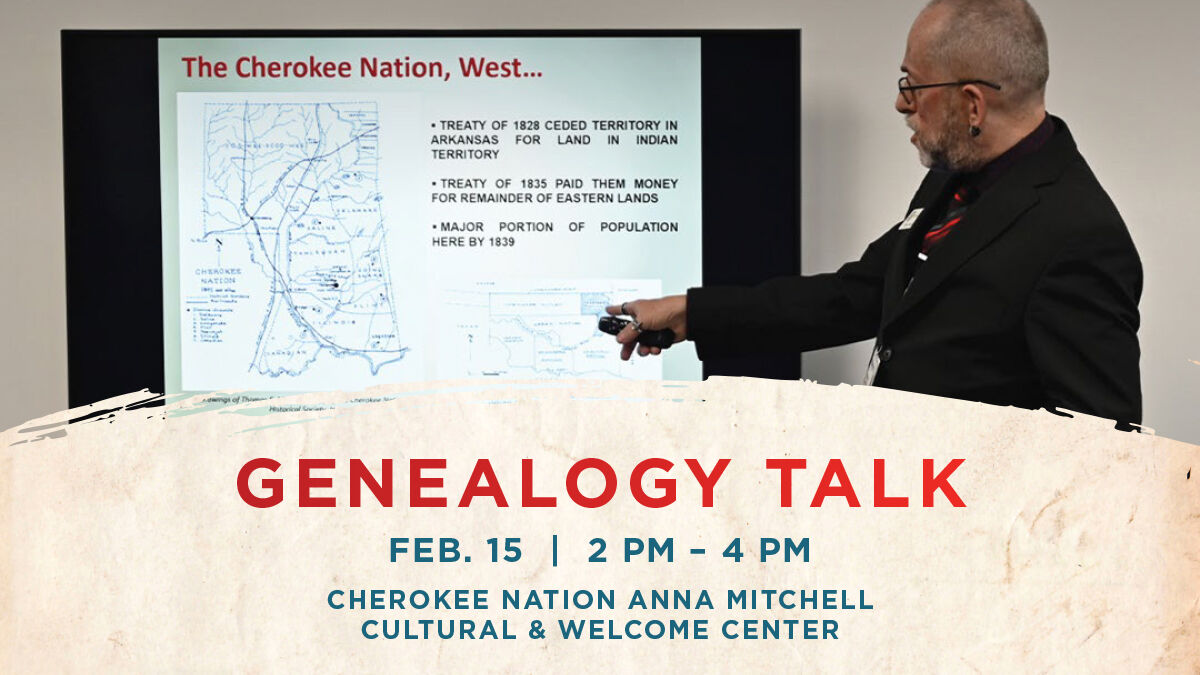
Unearthing Ancestry: A Guide to Navigating Cherokee Genealogy Research
For many Americans, tracing family roots is a journey into the past, connecting them to immigrant ancestors, historical events, and a sense of belonging. But for those with Cherokee heritage, this quest often transcends mere curiosity; it’s a profound pilgrimage into identity, resilience, and the reclamation of a history deliberately obscured and often painfully fragmented. The path to proving Cherokee ancestry is unique, fraught with historical complexities, legal intricacies, and a deep cultural significance that sets it apart from typical genealogical pursuits.
Unlike European ancestry, which might lead researchers to ships’ manifests or census records, Cherokee genealogy frequently converges on a specific set of government-mandated documents created during a tumultuous period of forced assimilation and land allotment. These records, while invaluable, are also products of policies designed to dismantle tribal sovereignty, making their interpretation a delicate and often emotionally charged endeavor.

The Cornerstone: The Dawes Rolls
At the heart of most Cherokee genealogical research lies the Dawes Rolls, officially known as the "Final Rolls of Citizens and Freedmen of the Five Civilized Tribes in Indian Territory." Compiled between 1898 and 1907 by the Dawes Commission, these rolls were created as a prerequisite for the allotment of communal tribal lands to individual tribal members and the ultimate dissolution of tribal governments in preparation for Oklahoma statehood.
To be listed on the Dawes Rolls meant one was considered a citizen of one of the Five Civilized Tribes (Cherokee, Choctaw, Chickasaw, Creek, and Seminole) by the U.S. government at that time. For many, this is the definitive hurdle in proving direct lineage to a recognized Cherokee ancestor. The information on the Dawes Rolls is remarkably detailed, often including:
- Dawes Roll Number: A unique identifier for each individual.
- Card Number: Links individuals within a family group.
- Name: Full name of the individual.
- Age and Sex: At the time of enrollment.
- Blood Quantum: A fractional degree of Indian blood (e.g., 1/4, 1/2). This controversial metric, imposed by the U.S. government, continues to be a point of contention and a requirement for enrollment in some tribes today.
- Relationship to Head of Family: Essential for establishing familial connections.
- Enrollment Date: When the individual was officially added to the roll.
- Census Card Information: Often includes previous names, parents’ names, and sometimes even the names of deceased children or spouses, providing critical links across generations.

Researchers must find a direct lineal ancestor listed on these rolls. It’s important to note that many people of Cherokee descent were not on the Dawes Rolls for various reasons, including:
- Choosing not to enroll: Some individuals resisted the process, viewing it as a betrayal of tribal sovereignty.
- Living outside the Indian Territory: The Dawes Commission primarily focused on those residing in what would become Oklahoma.
- Being excluded: Some legitimate claims were rejected by the commission.
- Being deceased: Only living individuals were enrolled.
"The Dawes Rolls are a double-edged sword," explains Dr. Sarah M. Jones, a historian specializing in Native American studies. "They provide an invaluable snapshot of a people at a critical juncture, yet they were also a tool of dispossession, fundamentally altering the fabric of tribal life. Understanding this context is crucial for any genealogist."
Beyond Dawes: Other Pivotal Rolls
While the Dawes Rolls are paramount for the Cherokee Nation and the United Keetoowah Band of Cherokee Indians (who primarily trace ancestry through those rolls), other significant rolls exist, particularly for those connected to the Eastern Band of Cherokee Indians (EBCI) in North Carolina:
- Guion Miller Rolls (1906-1909): These rolls were compiled to distribute funds from a U.S. government judgment against the Cherokee Nation for lands taken without full compensation. This roll is critical for many individuals tracing descent from Cherokees who remained in the East after the forced removal, rather than moving to Indian Territory. It includes applications from over 45,000 individuals, many of whom were rejected, but their applications often contain rich genealogical detail.
- Old Settler Rolls (1851): This roll documented Cherokees who had moved west to Indian Territory prior to the main removal of 1838-39 (the Trail of Tears).
- Cherokee Census Rolls (various dates): The Cherokee Nation conducted its own censuses prior to the Dawes Rolls, such as the Drennen Roll (1851) and the Kerns Roll (1880). These can provide crucial pre-Dawes information and help link families across different periods.
- Treaty Rolls: Earlier lists of individuals receiving payments or benefits from specific treaties between the Cherokee Nation and the U.S. government.
Each roll serves a different purpose and covers different groups of people, necessitating a thorough understanding of their historical context and criteria.
Unearthing Clues Beyond the Rolls
While the rolls are critical, they are not the sole source of information. A comprehensive search requires delving into a broader array of records:
- Federal Census Records (1830s-onward): Before the Dawes Rolls, federal censuses can place families geographically. However, Native Americans were often poorly enumerated or simply listed as "Indian" without tribal affiliation. Post-1880 censuses, especially in Indian Territory, may offer more detail.
- Oral Histories and Family Stories: Before written records, Cherokee history was passed down orally. Family narratives, even if seemingly fragmented, can provide invaluable clues, names, locations, and migration patterns. These stories should be recorded and cross-referenced with other sources. "My grandmother always told us we were ‘real Cherokees,’ but it wasn’t until I found her great-grandfather on the Dawes Roll that I truly understood the depth of that statement," shared one researcher, Maria Standingdeer.
- Church Records: Many Cherokees converted to Christianity, particularly Methodists and Baptists. Church registers can contain birth, marriage, and death records.
- Cemetery Records: Gravestones can provide birth and death dates, and sometimes family relationships. Tribal cemeteries often have unique markers or symbols.
- Land Allotment Records: Once an ancestor is identified on the Dawes Rolls, land records (allotment files, patents) can provide further details about their lives and property.
- Military Records: Many Cherokees served in U.S. wars (Civil War, WWI, WWII). Pension applications can include detailed family information.
- Indian Schools Records: Many Cherokee children were sent to boarding schools. These records can offer names, family details, and health information.
- Newspapers and Periodicals: Tribal newspapers like The Cherokee Advocate can contain obituaries, community news, and personal notices.
Navigating the Archives: Where to Begin Your Search
Several institutions are indispensable for Cherokee genealogy research:
- National Archives and Records Administration (NARA): NARA holds the original Dawes Rolls, Guion Miller Rolls, federal census records, and many other crucial documents. Their regional facility in Fort Worth, Texas, is particularly significant for records related to Oklahoma’s Five Civilized Tribes.
- Oklahoma Historical Society (OHS): Located in Oklahoma City, the OHS has an extensive collection of tribal records, newspapers, photographs, and family histories relevant to the Cherokee Nation and other Oklahoma tribes.
- Tribal Archives:
- Cherokee Nation Archives (Tahlequah, Oklahoma): Holds a vast collection of historical documents, tribal council minutes, and records specific to the Cherokee Nation.
- Eastern Band of Cherokee Indians Archives (Cherokee, North Carolina): Houses records pertinent to the EBCI.
- United Keetoowah Band of Cherokee Indians Archives (Tahlequah, Oklahoma): Maintains its own historical records.
- FamilySearch.org and Ancestry.com: These major online genealogical platforms have digitized many of the key rolls and records, making them accessible from home. FamilySearch is free and has an excellent collection, including microfilms of the Dawes Rolls. Ancestry.com offers a subscription service with a vast database.
- Fold3.com: Specializes in military records and often contains documents related to Native American service.
The Complexities of Identity: Blood Quantum and Enrollment
Perhaps the most challenging aspect of Cherokee genealogy is the concept of blood quantum and its connection to tribal enrollment. Blood quantum, a fractional measurement of one’s degree of "Indian blood," was a concept imposed by the U.S. government, not an indigenous one. It was used to determine who was "Indian enough" for land allotments and, later, for federal services.
Today, each of the three federally recognized Cherokee tribes (Cherokee Nation, Eastern Band of Cherokee Indians, and United Keetoowah Band of Cherokee Indians) sets its own enrollment criteria:
- Cherokee Nation: Requires lineal descent from an individual listed on the Dawes Rolls (Cherokee by Blood or Cherokee Freedmen section). No minimum blood quantum is required.
- Eastern Band of Cherokee Indians: Requires lineal descent from an ancestor on the 1924 Baker Roll (a census of the EBCI) and a minimum of 1/16th Cherokee blood quantum.
- United Keetoowah Band of Cherokee Indians: Requires lineal descent from an individual on the Dawes Rolls and a minimum of 1/4th Cherokee blood quantum.
It is crucial to understand that proving Cherokee ancestry is distinct from gaining tribal enrollment. While genealogical proof is a prerequisite, tribal enrollment is a sovereign right of each nation, based on their own laws and traditions. Many individuals may discover provable Cherokee ancestry but not meet the specific enrollment criteria of a federally recognized tribe. Furthermore, the notion of a "Cherokee Princess" in one’s lineage is a pervasive myth. Historically, Cherokee society was matrilineal, with no concept of European royalty or princesses. This romanticized, often fabricated, narrative often masks the difficult realities of Native American history.
Strategies for the Diligent Genealogist
- Start with What You Know: Begin with yourself, then your parents, grandparents, and so on. Gather birth certificates, marriage licenses, and death certificates.
- Verify Everything: Do not rely on family lore alone. Every piece of information should be corroborated by at least two independent sources.
- Be Patient and Persistent: Cherokee genealogy can be a long and complex process, often requiring multiple lines of inquiry.
- Document Meticulously: Keep detailed records of all sources, dates, and findings.
- Connect with Others: Join genealogical societies, online forums, and Cherokee heritage groups. Fellow researchers can offer invaluable advice and shared resources.
- Respect Tribal Sovereignty: Understand that tribal nations are sovereign entities with the right to determine their own citizenship.
The Enduring Quest
The journey of tracing Cherokee ancestry is more than just collecting names and dates; it’s an act of remembrance and cultural revitalization. It connects individuals to a vibrant past, a resilient people, and a profound heritage that has endured immense hardship. As researchers delve into these records, they not only discover their own story but also contribute to the ongoing narrative of the Cherokee people, ensuring that their history, identity, and legacy continue to thrive for generations to come. It is a powerful testament to the enduring spirit of a nation.


